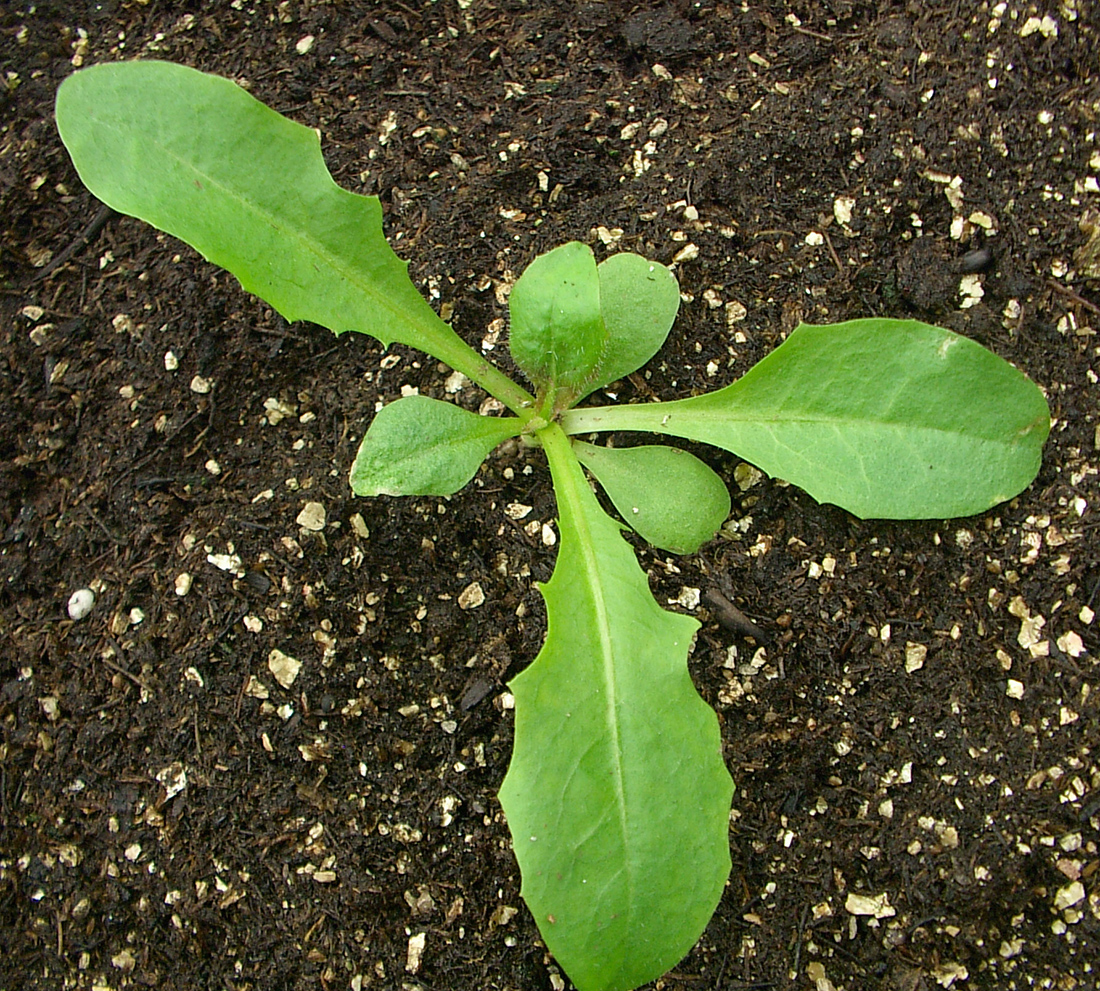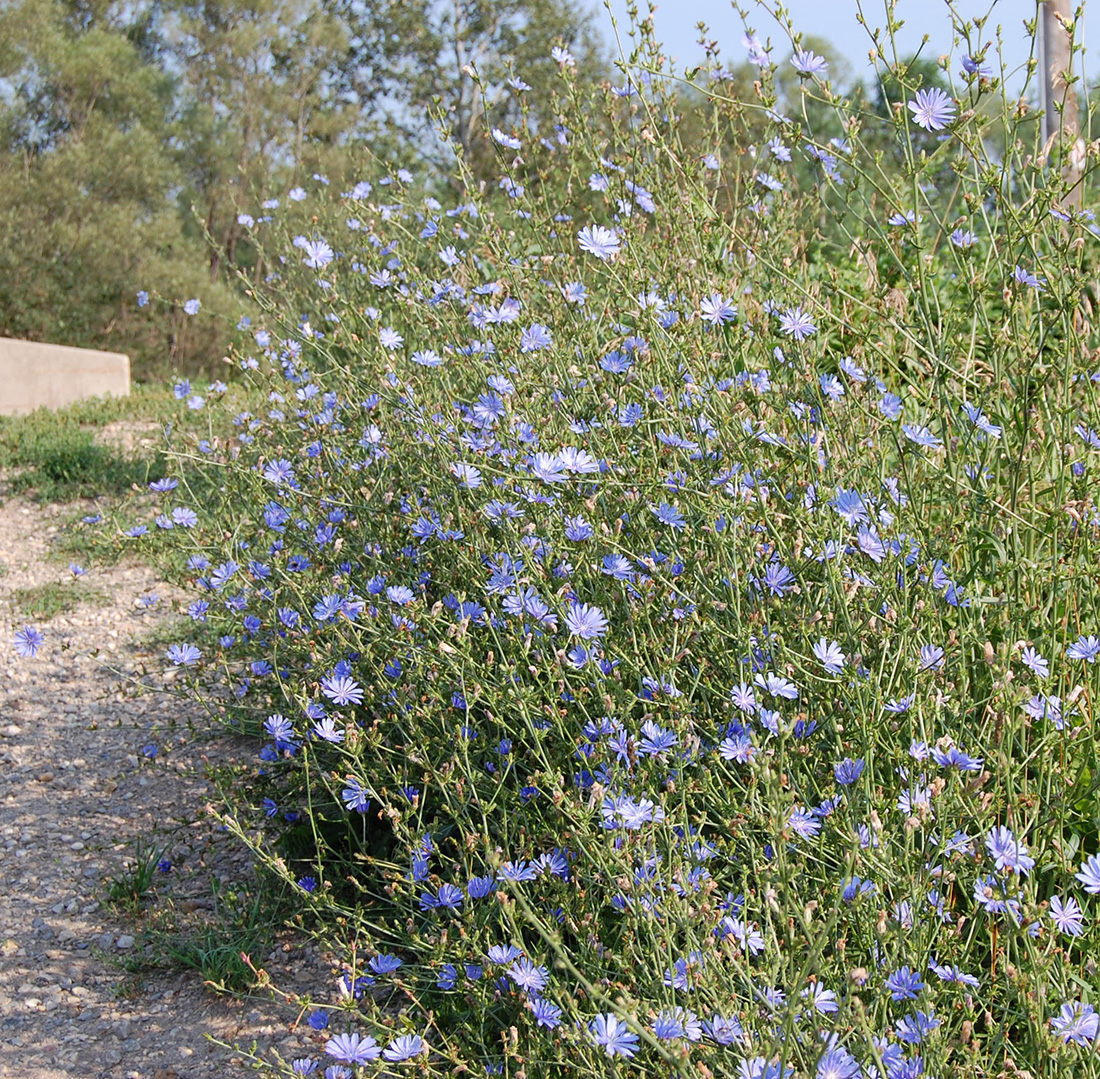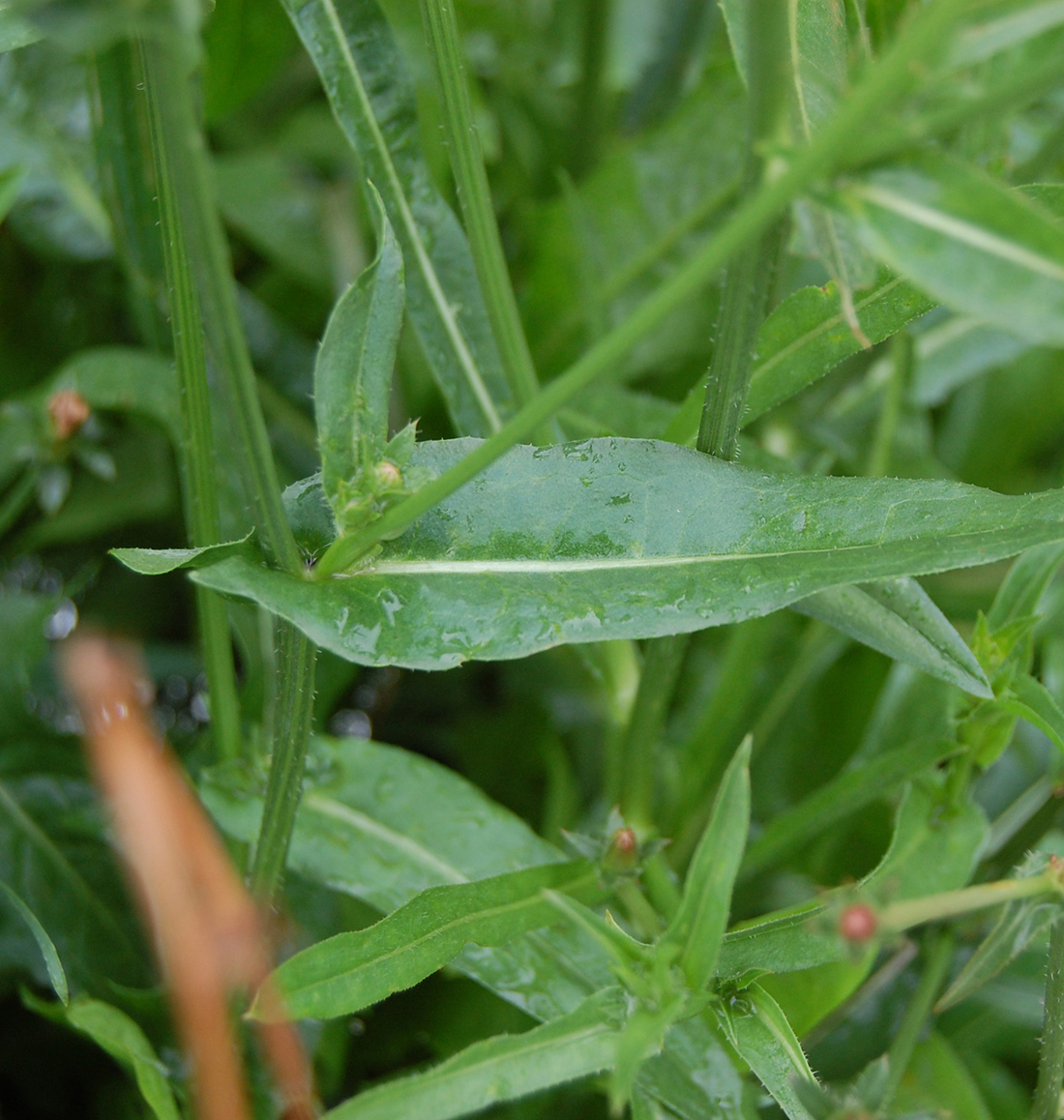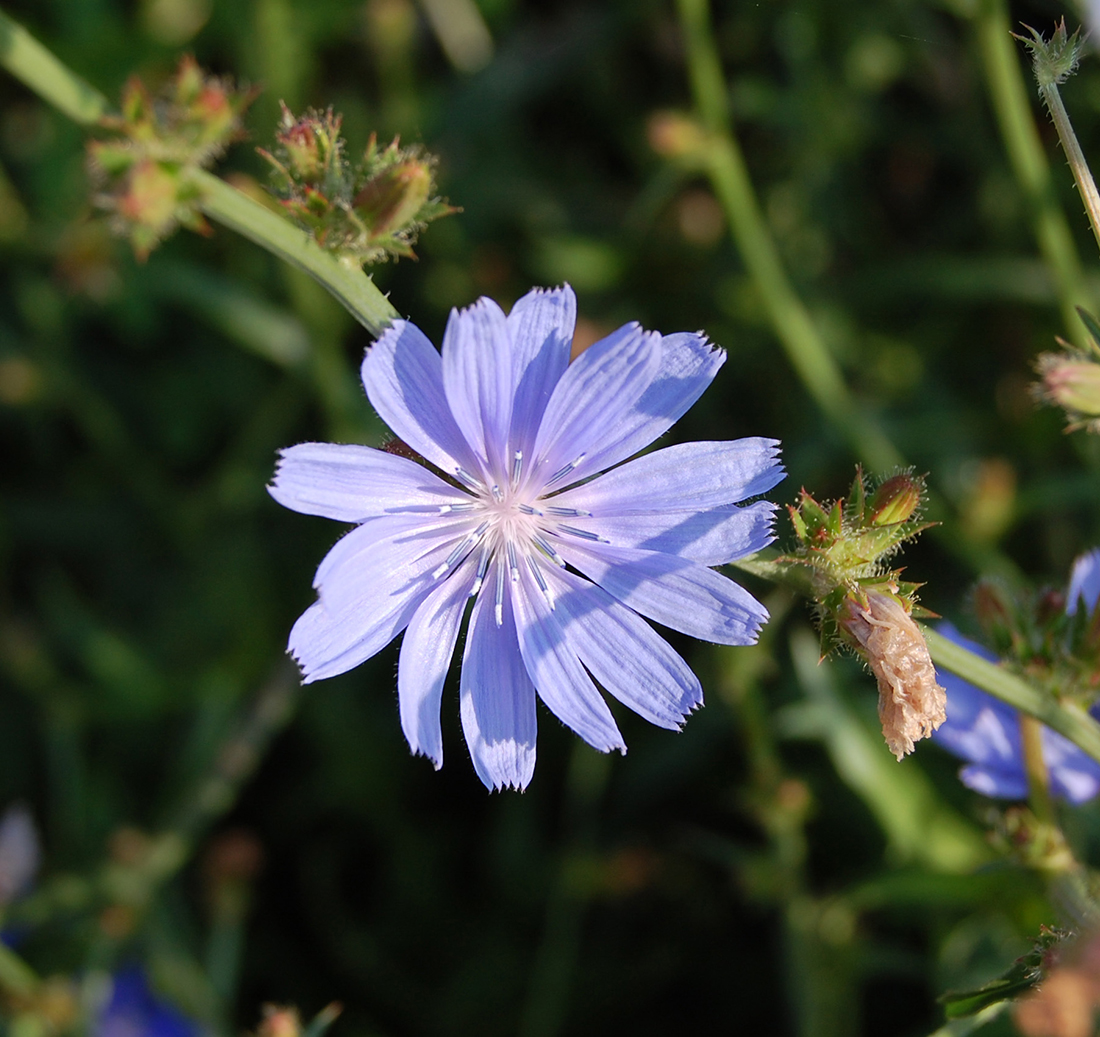Chicory
- Composite or aster (Asteraceae family):
- Cichorium intybus L.
- EPPO code:
- CICIN
- Other names:
- Blue dairy, blue sailors, coffee-weed, common chicory.
Species information
- Lifecycle:
- Biennial, but usually perennial.
- Propagation:
- Reproduces by seed.
- Emergence:
- Since mature seeds lack primary dormancy, they are able to germinate as soon as they leave the plant. Seed will germinate over a wide range of temperatures (5–35° C). Seed germination, however, is reduced when passed through the digestive tracts of cattle.
- Habitat:
- Chicory is largely found along roadsides and in waste areas, although it is occasionally found in minimum-till (no-till) cropping systems within the Golden Horseshoe area of Ontario.
- Competitiveness:
- No data exists on chicory’s competitiveness. In fact, more information exists on how to cultivate the plant, as it has been traditionally grown for medicinal purposes as it is rich in inulin, a unique type of dietary fiber. The leaves have been used as a vegetable crop and the roots as a coffee substitute (University of Nebraska-Lincoln, n.d.). More recently, there has been interest in growing it as a forage plant (Hall and Jung, 2008).
Identification clues
Seedling
- Cotyledons:
- Oval to club shaped, tapering at the base into a short stalk, slightly indented at the apex.
- First leaves:
- Chicory’s first leaves appear as a basal rosette, closely resembling dandelion. They are elongated, wider near the apex and tapering near the base, margins irregularly wavy. Older leaves are rough and hairy compared to the relatively smooth leaves of dandelion.
- Mature leaves:
- Stem leaves are alternate and lower leaves will be reminiscent of dandelion leaves; upper stem leaves are triangular and clasping the stem.
Mature plant
- Stems:
- Chicory’s stem is erect and grows up to 1.5 m tall. It is covered in coarse whisker-like hairs and is much branched. Milky sap will exude from the stem when broken.
- Flowers:
- Chicory flowers are bright blue and 3–4 cm in diameter. It is comprised only of petal-like ray florets which are toothed at the apex.
- Seeds:
- Its seeds are brown and grow to be 2 mm long. They are roughly triangular in shape, angled towards the base and have a short, bristly pappus at the apex that looks like a moustache.
- Roots:
- Taproot.
Often mistaken for
I know it's not Dandelion because although it’s almost impossible to tell the difference between dandelion and chicory at the seedling and rosette stage, but as the plants begin the reproductive phase the differences become obvious. Chicory develops a branched and leafy stem which is absent in dandelion.
Chicory has numerous bright blue flowers, and dandelion, with its yellow flowers, is much more common in cultivated fields.




Updated: January 13, 2023
Published: January 13, 2023